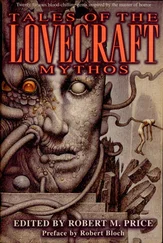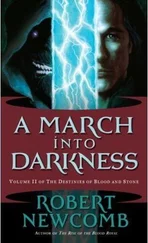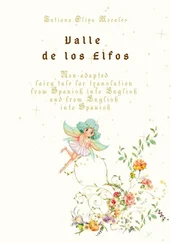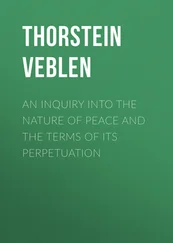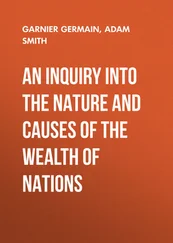Robert Pirsig - Lila. An Inquiry Into Morals
Здесь есть возможность читать онлайн «Robert Pirsig - Lila. An Inquiry Into Morals» весь текст электронной книги совершенно бесплатно (целиком полную версию без сокращений). В некоторых случаях можно слушать аудио, скачать через торрент в формате fb2 и присутствует краткое содержание. Жанр: Современная проза, на английском языке. Описание произведения, (предисловие) а так же отзывы посетителей доступны на портале библиотеки ЛибКат.
- Название:Lila. An Inquiry Into Morals
- Автор:
- Жанр:
- Год:неизвестен
- ISBN:нет данных
- Рейтинг книги:3 / 5. Голосов: 1
-
Избранное:Добавить в избранное
- Отзывы:
-
Ваша оценка:
- 60
- 1
- 2
- 3
- 4
- 5
Lila. An Inquiry Into Morals: краткое содержание, описание и аннотация
Предлагаем к чтению аннотацию, описание, краткое содержание или предисловие (зависит от того, что написал сам автор книги «Lila. An Inquiry Into Morals»). Если вы не нашли необходимую информацию о книге — напишите в комментариях, мы постараемся отыскать её.
Lila. An Inquiry Into Morals — читать онлайн бесплатно полную книгу (весь текст) целиком
Ниже представлен текст книги, разбитый по страницам. Система сохранения места последней прочитанной страницы, позволяет с удобством читать онлайн бесплатно книгу «Lila. An Inquiry Into Morals», без необходимости каждый раз заново искать на чём Вы остановились. Поставьте закладку, и сможете в любой момент перейти на страницу, на которой закончили чтение.
Интервал:
Закладка:
But that which you now say we must live on is too small.
The Texans have taken away the places where the grass grew the thickest and the timber was the best. Had we kept that, we might have done this thing you ask. But it is too late. The white man has the country which we loved and we only wish to wander on the prairie until we die. Any good thing you say to me shall not be forgotten. I shall carry it as near to my heart as my children and it shall be as often on my tongue as the name of the Great Spirit. I want no blood upon my land to stain the grass. I want it all clear and pure, and I wish it so, that all who go through among my people may find peace when they come in, and leave it when they go out.
As Phædrus read it again this time he saw that it wasn’t quite as close to cowboy speech as he’d remembered — it was a damn sight better than cowboy speech — but it was still closer to the white Plains dialect than is the language of the European. Here were the straight, head-on, declarative sentences without stylistic ornamentation of any kind, but with a poetic force that must have put the sophisticated bureaucratic speech of Ten Bears' antagonists to shame. This was no imitation of the involuted Victorian elocution of 1867!
From that original perception of the Indians as the originators of the American style of speech had come an expansion: the Indians were the originators of the American style of life. The American personality is a mixture of European and Indian values. When you see this you begin to see a lot of things that have never been explained before.
Phædrus' problem now was to organize all this into a persuasive book. It was so radically different from the usual explanations of America, people would never believe it. They’d think he was just babbling. If he just talked in generalities he knew he would lose it. People would just say, Oh yes, well, that’s just another one of those interesting ideas people are always coming up with, or You can’t generalize about Indians because they’re all different, or some other cliché like that and walk away from it.
He’d thought for a while he might come at it obliquely, starting with something very concrete and specific such as a cowboy film that people already know about, for example, Butch Cassidy and the Sundance Kid.
There is an opening scene in that film where everything is shown in brown monochrome probably to give a historic, legendary feeling to it. The Sundance Kid is playing poker, and the scene is slowed a little to give it a dramatic tension. The Kid’s face is all you see. Only a fragment of one of the other players is sometimes seen, and an occasional wisp of smoke passing before the Sundance Kid’s countenance. The Kid is without expression but is alert and self-controlled.
The voice of an unseen gambler says, Well, it looks like you cleaned everybody out, fella. You haven’t lost a hand since you got the deal.
There is no change in the Kid’s expression.
What’s the secret of your success? the gambler’s voice continues. It is threatening. Ominous.
Sundance looks down for a while as if thinking about it, then looks up unemotionally. Prayer, he says.
He doesn’t mean it but he doesn’t say it sarcastically either. It’s a statement poised on a knife edge of ambiguity.
Let’s just you and me play, the gambler says.
A showdown is about to occur. It is the cliché of the Wild West. It has been repeated in hundreds of films shown in thousands of theaters and millions of TV sets again and again. The tension grows but the Sundance Kid’s expression doesn’t change. His eye movements, his pauses, are in a kind of relaxed harmony between himself and his surroundings even though we see that he is in a growingly dangerous situation, which soon explodes into violence.
What Phædrus wanted to do now was use just that one scene as an opening illustration. To it he would add just one explanation which no one ever notices, but which he was sure was true. What you have just seen, he would explain, is a rendition of the cultural style of an American Indian.
Then would be seen, identified for what they were, the famous old traits of the American Indian: silence, a modesty of manner, and a dangerous willingness to sudden, enormous violence.
It would be a dramatic way of making the point, he thought. Before you are alerted to it you don’t see it, but once you become aware, it’s obvious. The source of values that Robert Redford tapped and that the American public overwhelmingly responded to is the cultural value pattern of the American Indian. Even the color of Redford’s face in the sepia monochrome was changed to that of an Indian.
Certainly it wasn’t the intention of the film to personify an Indian. It came naturally as a way of showing the Wild West. But the point of Phædrus' thesis was that the reason it came naturally and that audiences responded to it naturally was that the film reached into a root source of American feelings for what is good. It is this source of what is good, this historic cultural system of American values, which is Indian.
If you take a list of all the things European observers have stated to be the characteristics of white Americans, you’ll find that there is a correlation with the characteristics white American observers have customarily assigned to the Indians. And if, furthermore, you take another list of all the characteristics that Americans use to describe Europeans you’ll get a pretty good correlation with Indian opinions of white Americans.
To prove this point Phædrus intended to reverse the situation: instead of showing how a cowboy resembles an Indian, he would show how an Indian resembles a cowboy. For this he’d found a description by the anthropologist, E. A. Hoebel, of a Cheyenne Indian male:
Reserved and dignified… [the Cheyenne male]… moves with a quiet sense of self-assurance. He speaks fluently, but never carelessly. He is careful of the sensibilities of others and is kindly and generous. He is slow to anger and strives to suppress his feelings, if aggravated. Vigorous on the hunt, in war he prizes the active life. Towards enemies he feels no merciful compunctions, and the more aggressive he is the better. He is well versed in ritual knowledge. He is neither flighty nor dour. Usually quiet, he has a lightly displayed sense of humor. He is sexually repressed and masochistic but that masochism is expressed in culturally approved rites. He does not show much creative imagination in artistic expression but he has a firm grip on reality. He deals with the problems of life in set ways while at the same time showing a notable capacity to readjust to new circumstances. His thinking is rationalistic to a high degree and yet colored with mysticism. His ego is strong and not easily threatened. His superego, as manifest in the strong social conscience and mastery of his basic impulses, is powerful and dominating. He is mature, serene and composed, secure in his social position, capable of warm social relations. He has powerful anxieties but these are channelized into institutionalized modes of collective expression with satisfactory results. He exhibits few neurotic tendencies.
Now if that isn’t a description of William S. Boyd playing Hopalong Cassidy in twenty-three or fifty or however many films, there never was one. With the single exception of the Indian mysticism the characterization is perfect.
Whether the American cowboy ever really was like William S. Boyd is not really relevant. What is relevant is that in the 1930s, during the darkest days of the Great Depression, Americans shoveled out millions of dollars to look at his movies. They didn’t have to. Nobody forced them to. But they went anyway, just as they later went to see Butch Cassidy and the Sundance Kid.
Читать дальшеИнтервал:
Закладка:
Похожие книги на «Lila. An Inquiry Into Morals»
Представляем Вашему вниманию похожие книги на «Lila. An Inquiry Into Morals» списком для выбора. Мы отобрали схожую по названию и смыслу литературу в надежде предоставить читателям больше вариантов отыскать новые, интересные, ещё непрочитанные произведения.
Обсуждение, отзывы о книге «Lila. An Inquiry Into Morals» и просто собственные мнения читателей. Оставьте ваши комментарии, напишите, что Вы думаете о произведении, его смысле или главных героях. Укажите что конкретно понравилось, а что нет, и почему Вы так считаете.

